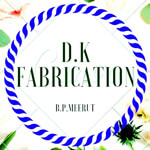- Bhagawatpura, Meerut, Uttar Pradesh
- GST NO. : 09EIXPS8362A2ZH
What To Look For When Buying Red Leather Cricket Balls In Bulk?
Posted by Admin on August, 19, 2025
Buying cricket equipment in bulk needs careful thinking about quality. Red leather cricket balls cost a lot of money for wholesalers who supply to stores and sports clubs. Making smart choices keeps customers happy and businesses successful in the sports equipment market.
Continue reading to learn what to look for when buying red leather cricket balls in bulk.
Cricket Ball Construction Standards
Quality cricket balls follow strict rules that decide how well they work and last. The outer leather cover must stay the same thickness all around the ball. Proper stitching with strong thread helps the ball keep its shape during long games and bad weather.
Core materials significantly impact ball behaviour during matches. Traditional cork centres wrapped with wound string offer the best bounce. How tight the string is affects how the ball responds to bowling. Reliable red cricket leather ball manufacturers maintain the same core specs for all balls.
Leather Quality and Strength
The top leather choice decides how long the ball lasts and how it plays. Full-grain leather works better than split or fixed leather types. The leather should feel soft but firm, showing proper tanning processes. A smooth surface without marks or weak spots keeps ball performance the same.
Leather thickness directly affects how long the ball lasts and playing experience. Standard rules require leather thickness between 3.5 to 4.5 millimetres for pro balls. Thicker leather protects better against wear but may change ball weight. Same thickness everywhere stops uneven wear spots.
Colour Consistency
Red cricket leather ball colour consistency becomes crucial when supplying multiple teams or institutions. Colour differences in big orders look unprofessional and make customers unhappy. Many manufacturers use standard colouring processes to maintain uniform colour across large production runs without hurting leather quality.
Fade resistance protects the investment value of bulk purchases. High-quality red colours go deep into leather, preventing colour loss during long outdoor use. Sun-resistant treatments help keep the bright red colour despite long sun contact. Colour retention directly affects the professional look throughout the ball's useful time.
Weight and Size Specifications
World cricket regulations set exact weight and size needs for match-quality balls. Official specs require weights between 155.9 to 163 grams with sizes measuring 224 to 229 millimetres around. Bulk orders must show steady following of these specs across all units without big changes.
Manufacturing limits should stay within acceptable ranges throughout large production runs. Weight changes over 2-3 grams make performance differences that affect game quality. Professional measuring tool checking ensures following world standards. Consistent specifications maintain credibility with retail customers and sporting institutions.
Cost Considerations
Price per unit goes down with larger quantity orders, but quality should never be given up for cost savings. Comparing total cost of ownership includes strength factors and customer happiness impacts. Higher-quality balls may cost more at first but give better long-term value through longer life and steady performance.
Bulk pricing negotiations should include quality guarantees and defect replacement terms. Payment terms and delivery schedules affect cash flow and inventory management. Transportation costs and import duties impact total acquisition costs. Value analysis considers all factors beyond initial purchase price.
All in all, successful bulk purchasing of red cricket leather balls requires thorough evaluation of multiple quality factors. Manufacturing standards, leather quality and specification form the base of smart buying decisions.

Leave a Comment